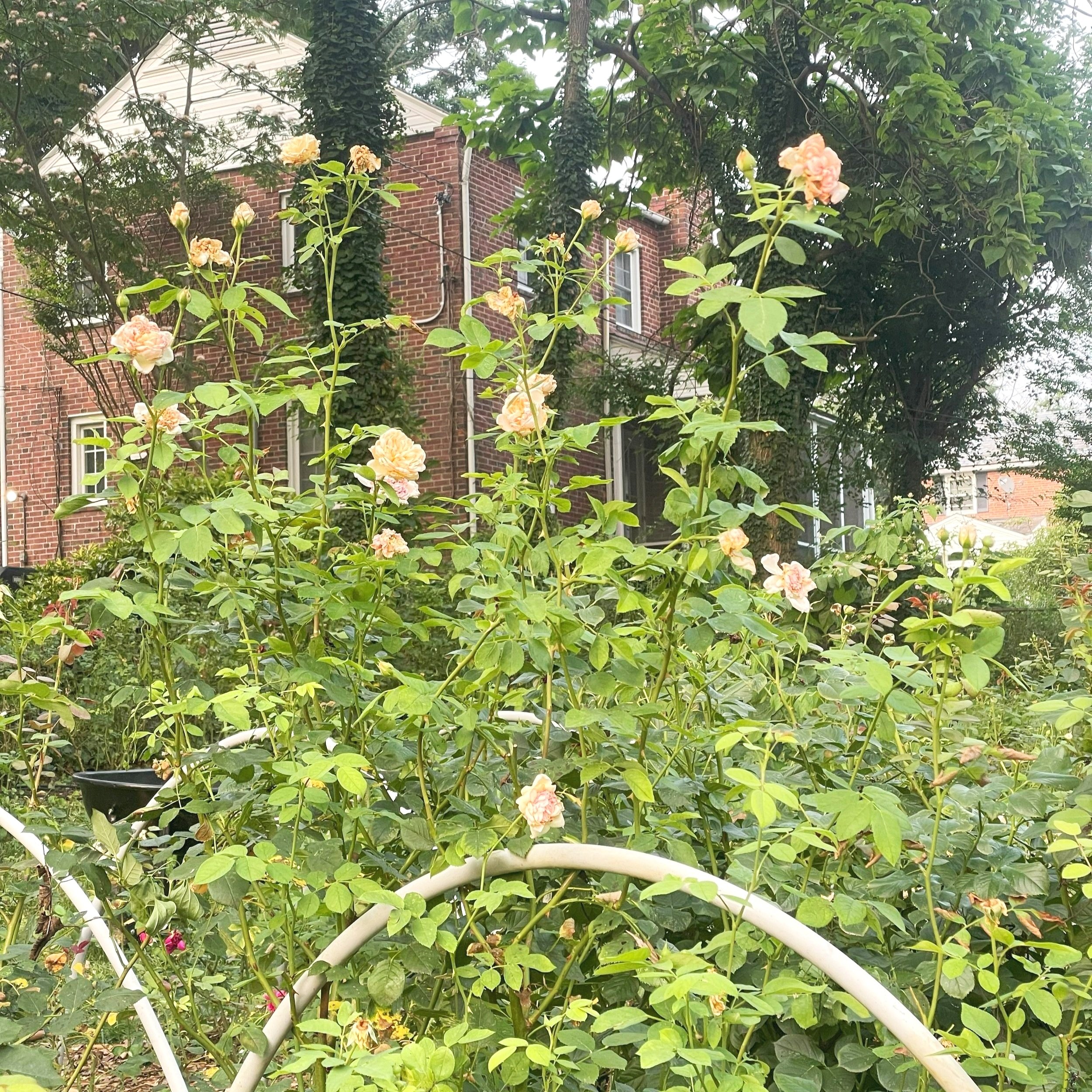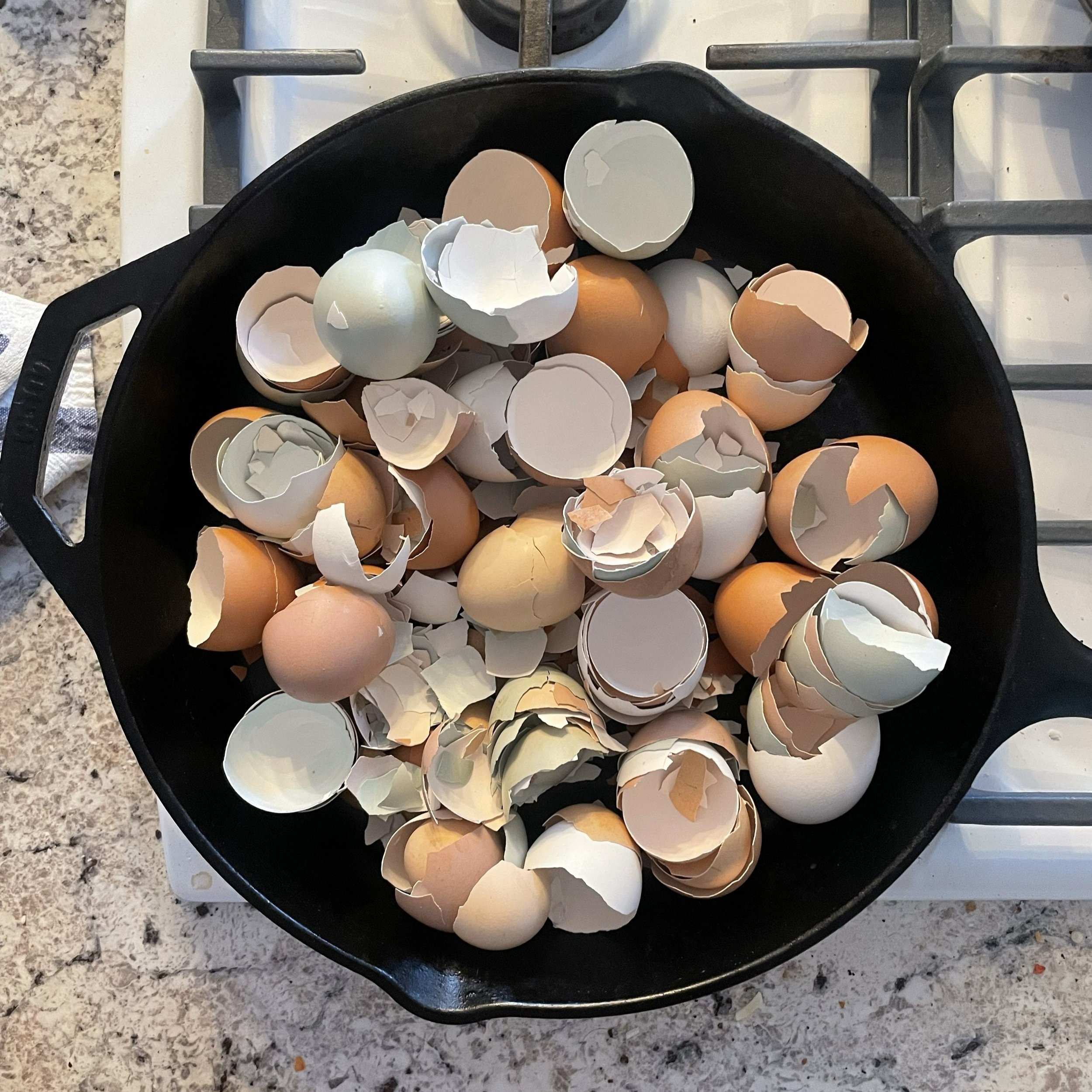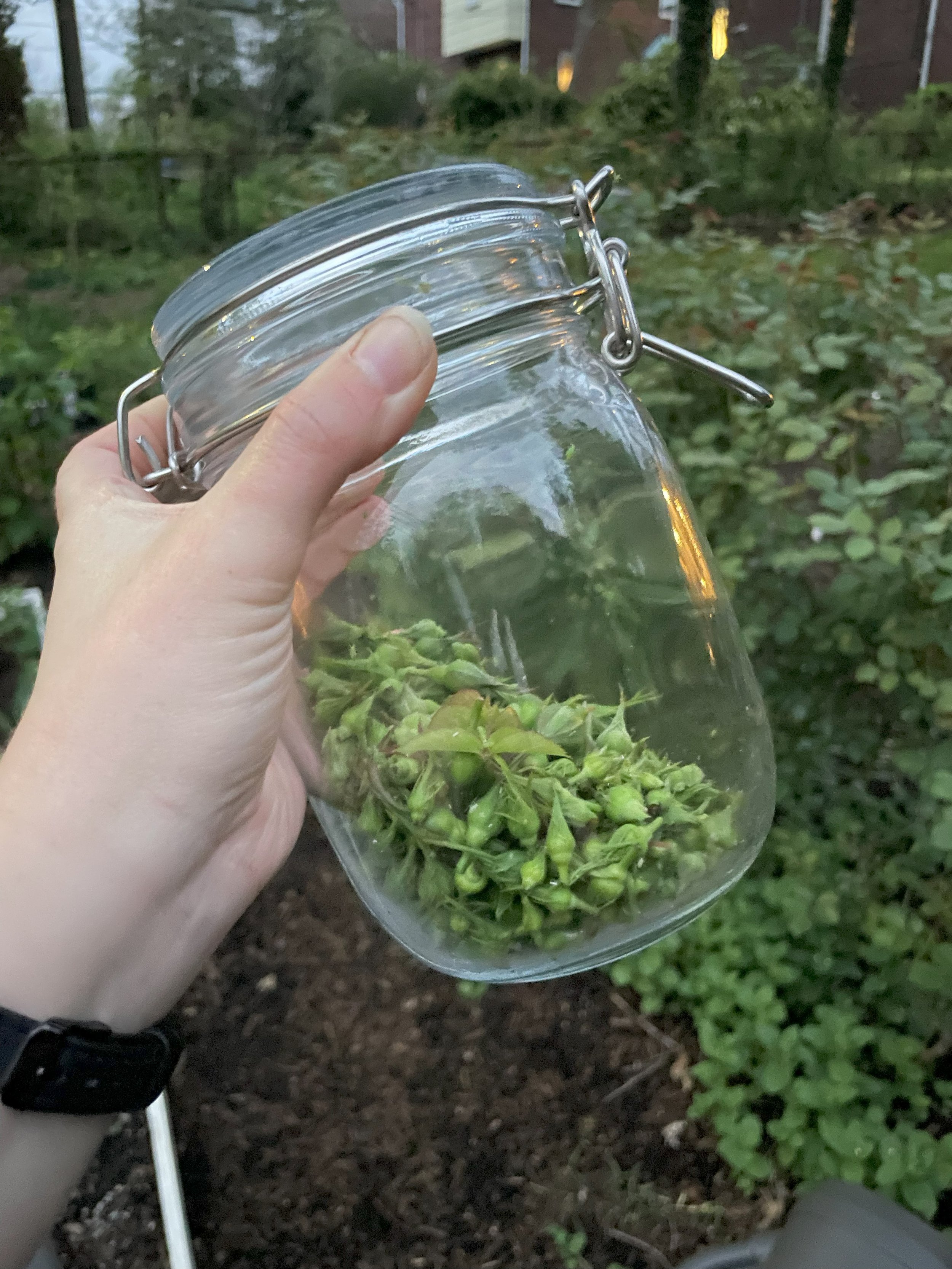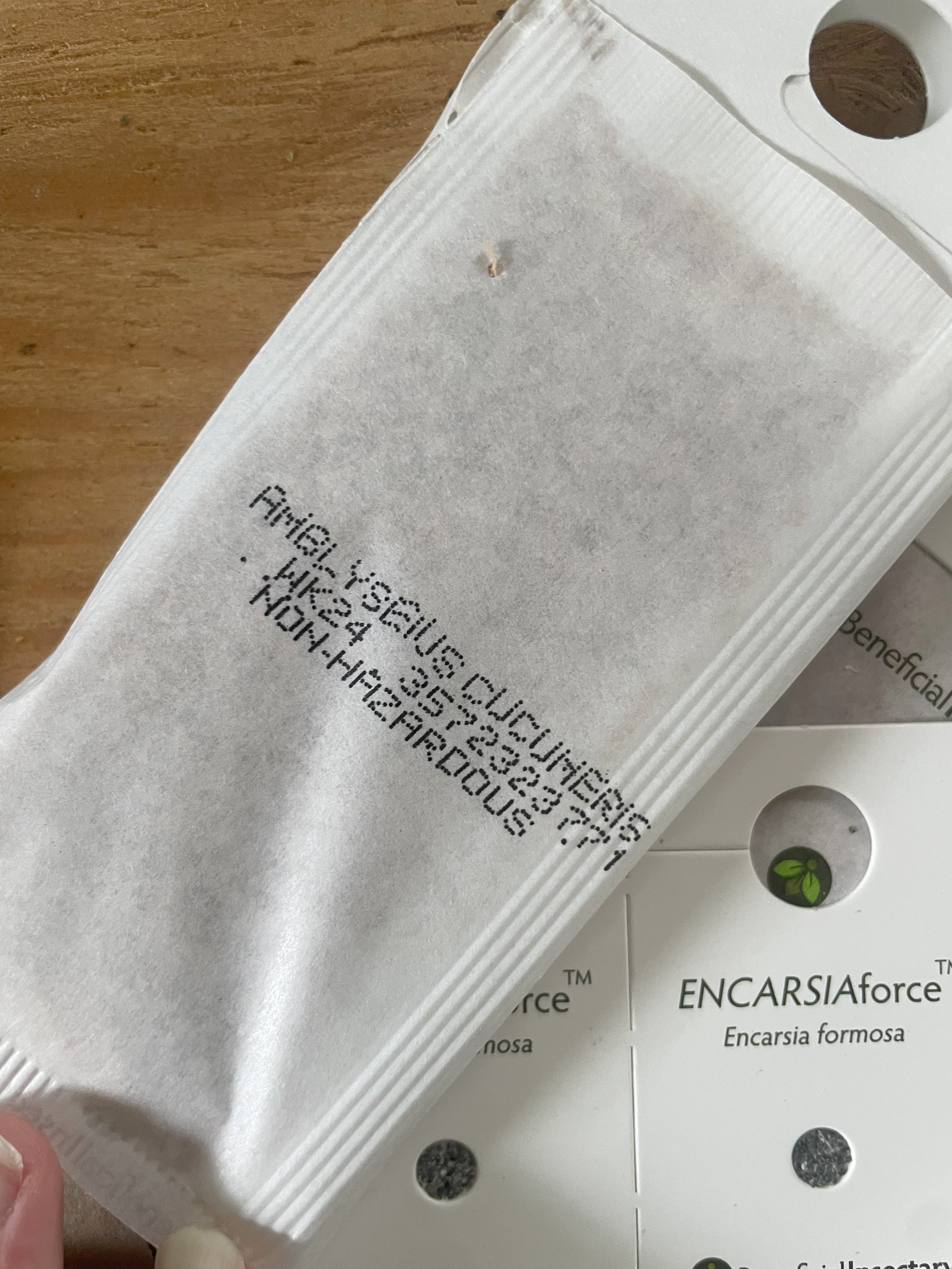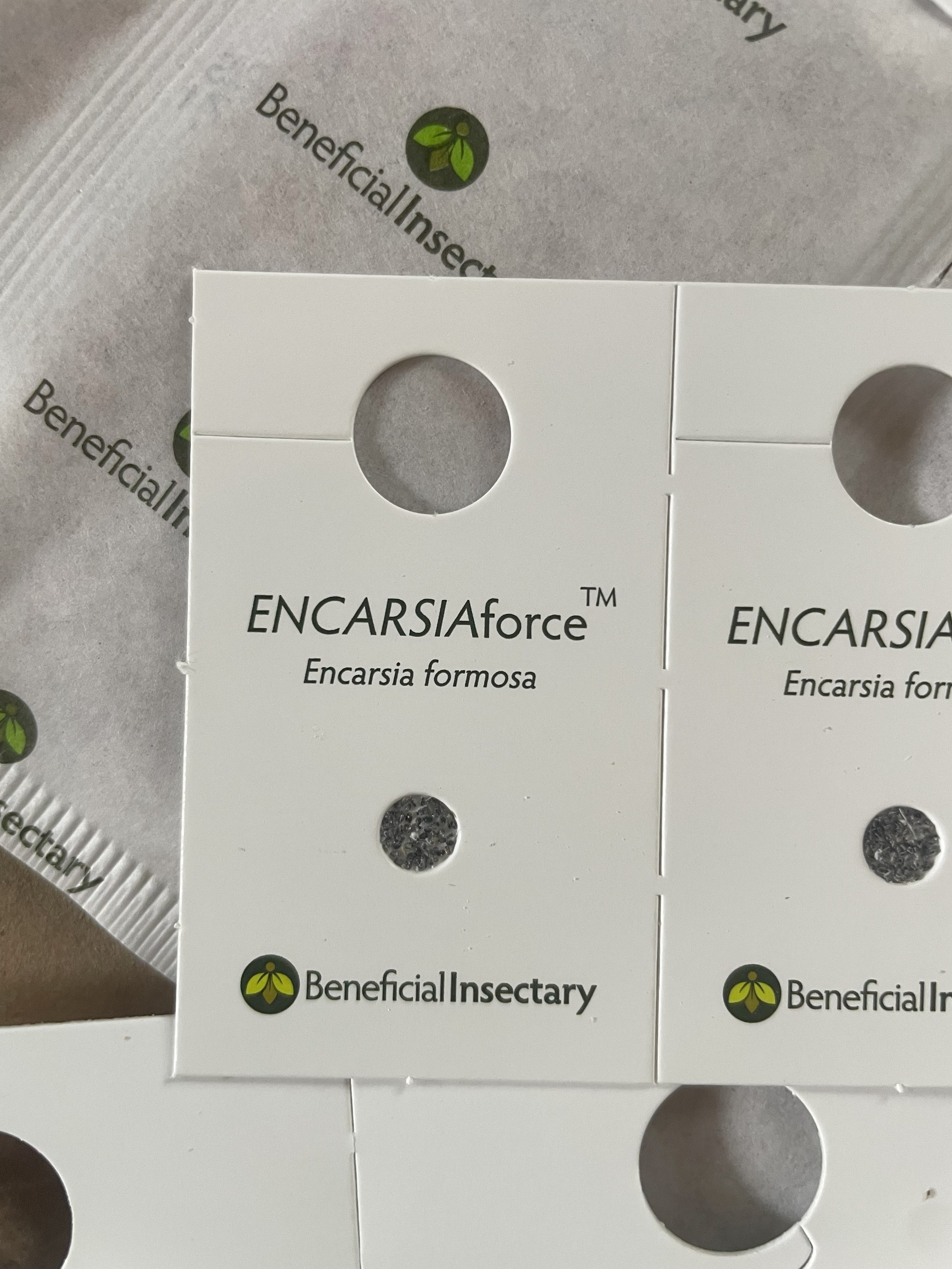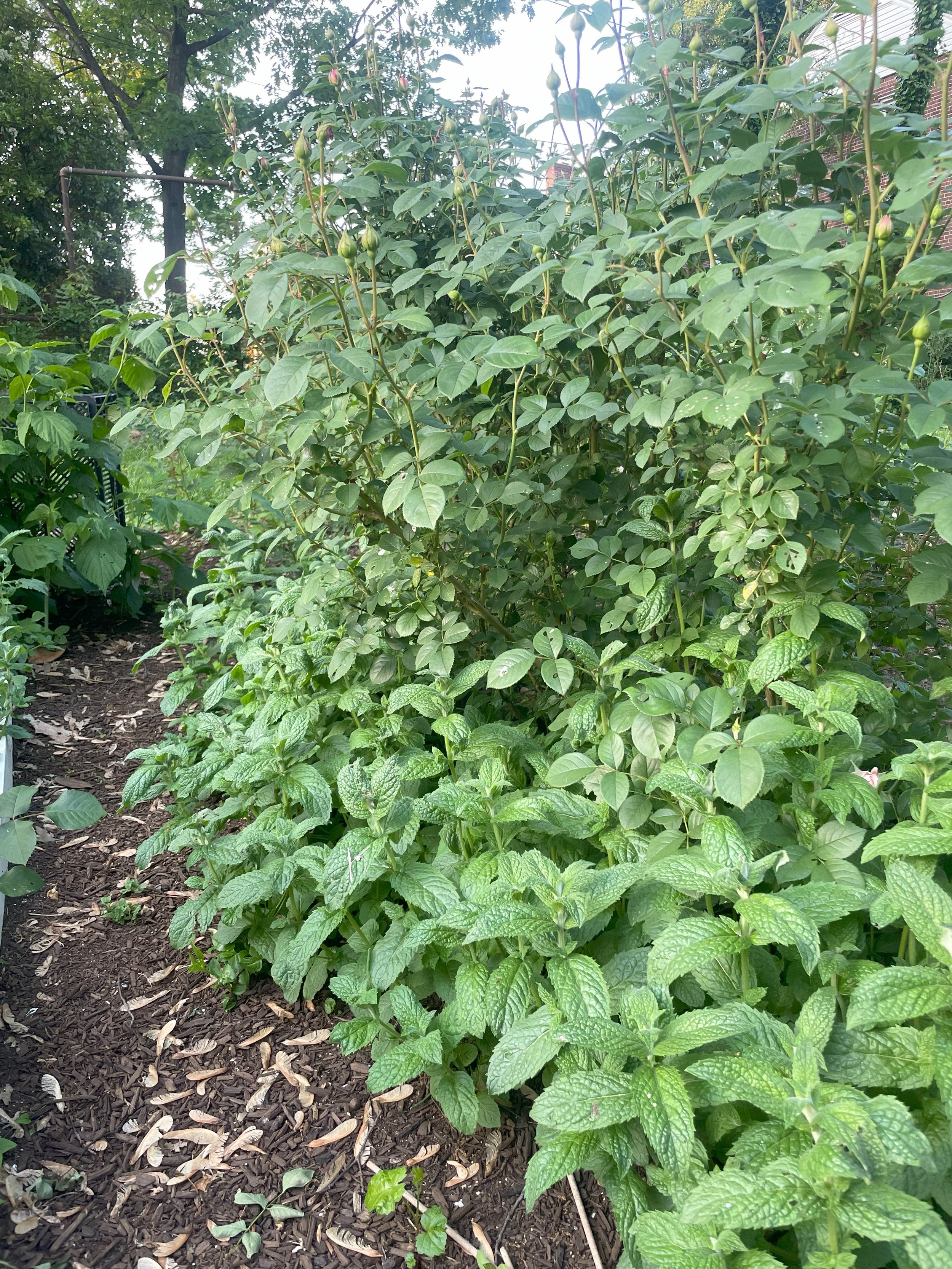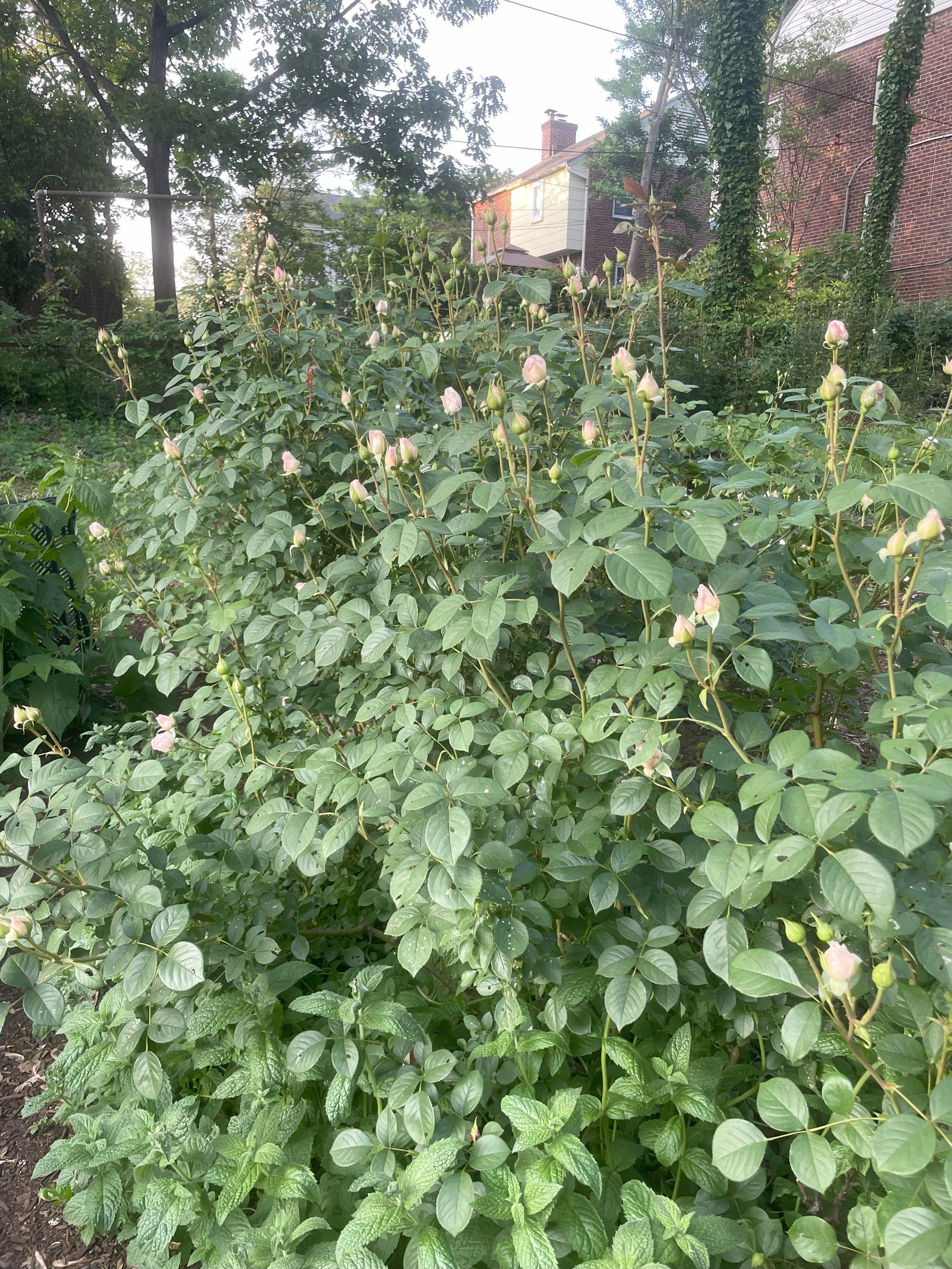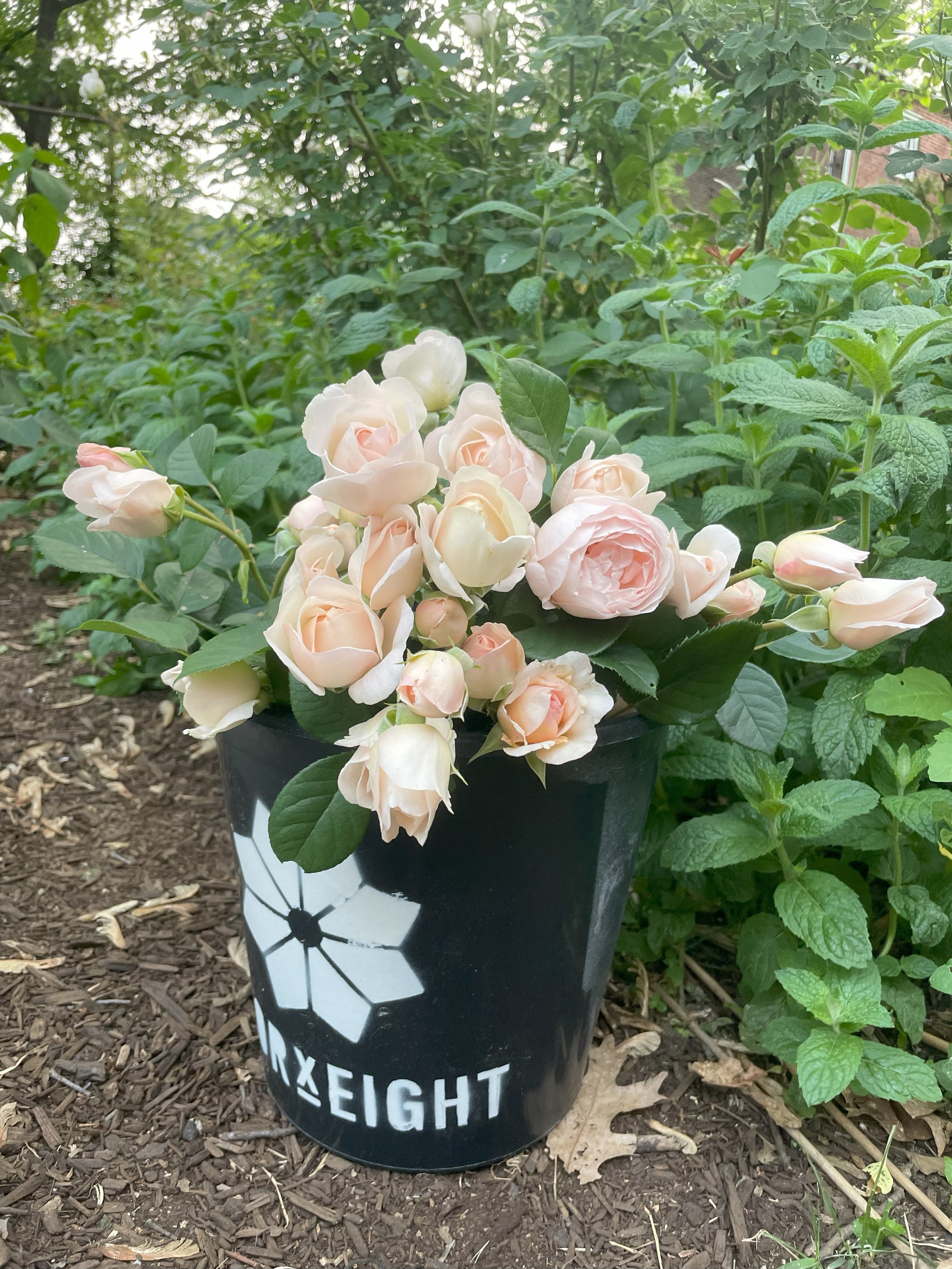5 Regenerative Ag Practices I’ve Been Utilizing in 2023
Regenerative agriculture is in the zeitgeist. Whether you chose to implement it or not, there are some undeniable benefits to taking a few regenerative ag practices into your farm or garden. Focusing on improving soil health & structure leads to long term higher yields and less resources spent on inputs. Focusing on environmental and habitat health attracts beneficial animals and insects to your area, which help manage crop-harming pests.
Every year, in late winter, it seems like Jennie Love releases a huge backlog of content on her podcast No Till Flowers Podcast. The episodes arrive at a time where the roses are just waking up, and I’m ready to dig my hands in the dirt and see some life come up! While not every regenerative ag practice is feasible in my closely-planted, tiny urban yard, I’ve adapted a few to try out this year at the Florxeight homestead.
5 PRACTICES FOR FLORXEIGHT ‘23
Natural & Recycled Inputs
Pulse Watering
Integrated Pest Management
Companion Planting / Intecropping
BRIX Tracking
1.NATURAL & RECYCLED INPUTS
Its easy to love the idea of natural and recycled inputs - especially for new growers just starting out (no $$) or small scale growers (no economy of scale from buying in bulk). An oldie but a goodie, I’m finally trying out the JADAM eggshell input from one of Jennie’s early episodes. I was lucky to be able to spend some time with college classmates in February for our annual “ski weekend” (skiing is optional) and collect the eggshells after Saturday brunch. These beautiful shells came from a friend who has chickens, which gives them some magical powers in my imagination. I also love the idea of recycling bits and pieces of the roses in a JADAM juice. Between disbudding and stripping off foliage at harvest, the roses product a surprising amount of green waste. As long as it doesn’t show signs of disease, why not let it ferment in some rainwater and see what happens?? Plus cannibalized plant material just seems like something roses as a species would enjoy…
2. PULSE WATERING
I am VERY intrigued by this concept. Watering less but making it more effective?? Sign me up! The idea behind pulse watering is that watering less deeply but more frequently, creates a more efficient movement of water through a soil structure to hit more of a plants root zone. This concept has been applied successfully by farmers of dahlias and almonds in Australia. Pulse irrigation being proven successful on almond trees in Australia and California really sold me on trying the concept. As much as dahlias and roses share overlap in the “fussy flower” realm, they have incredibly different growth habits and root structures. Dahlias are a shallow-rooted tuber plant; roses are deep-rooted perennial shrub - much more in common with an almond tree than a dahlia.
My biggest challenge with implementation will be technology. Most pulse systems rely on an automated timer or moisture meter to deliver water on a set schedule or as weather conditions would lead to plant stress. I don’t have either of those options - I don’t even have an irrigation system! Relying on hose watering is a huge PITA but its where I’m at for one more season at least. While I won’t be able to water for 15 minutes each hour, for 6 hours, I can attempt to adapt the concepts of pulse watering to my specific situation potentially by watering less but watering every day? Stay tuned!
Good info on pulse watering:
Jennie Love Podcast - The Power of Pulse Watering: Effective Irrigation and Better Plant Health with Emma Horswill from Earthenry Farm
Winkie Dahlias - who literally wrote the book on pulse watering for dahlias!
Almonds in California - also has a plug for cover cropping and mulching. Big mulch fans at Florxeight
3. INTEGRATED PEST MANAGEMENT
I have been implementing, or attempting, integrated pest management for a few years now. My biggest pest problem is with thrips. They completely ruin blooms and are incredibly hard to combat without a very aggressive approach. In past years, I would order in specific bugs like minute pirate bugs, when I began to notice thrips affecting my blooms. This year, I jumped on an offering from Heirloom Roses who was testing out a beneficial insect subscription. $120 for 3 months, when I would previously pay $80 for one shipment? Sign me up! Look for a full blog review in the future as the monthly bugs roll in.
4. COMPANION PLANTING & INTERCROPPING
My only experience with rose companion planting or intercropping has been for pest management - with MINT. Yes mint. The notoriously invasive, impossible to control, strong smelling herb. And let me tell you, it works. My roses which have mint planted under them are some of my healthiest and most productive plants I own. I’m looking to expand my mint plantings and other repellant plants, like garlic, to intercrop with my roses. Bonus: it doubles up on space! Herbs that repel pests and double in the kitchen. Garlic, thyme, basil, and oregano are all in my future.
5. MEASURING & MONITORING BRIX LEVELS
Brix is a measure of sugar content in water. Measuring Brix in plants requires the pressing of plant material into a liquid, frequently with a garlic press, and placing in a refractometer to measure the sugar content. And it might feel counterintuitive BUT higher sugar levels = less pests! The higher sugar levels make the plant material unattractive and indigestible for most insects. I confess that I bought a refractometer last year and did nothing with it. But this year is the year! Armed with molasses, a garlic press, and my no-longer-new refractometer, pests beware!
Good info on Brix here:
FYI - the verdict on molasses as an effective way to increase Brix and provide micronutrients is out. I am trying it anyways to see what happens.
